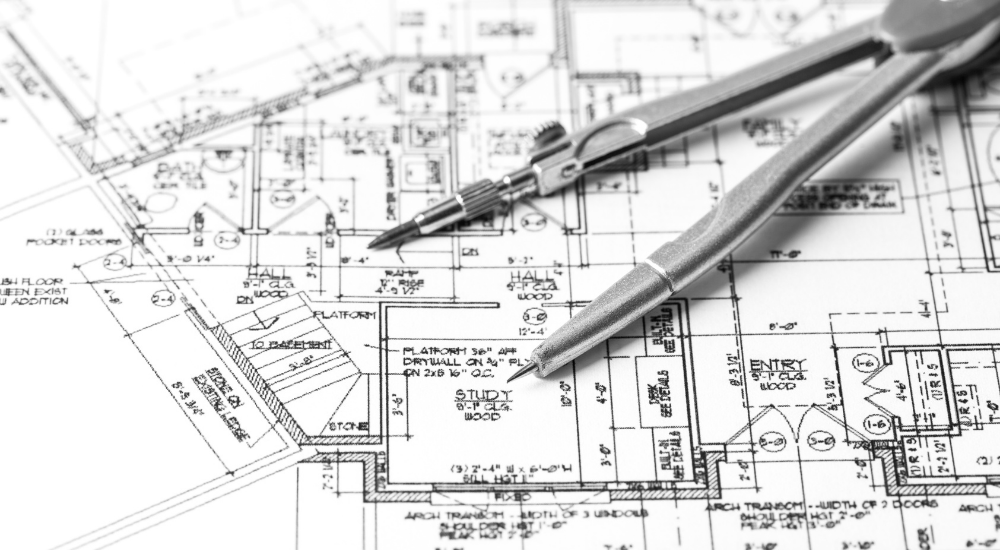Comprehending the Diverse Job Paths Available for Aspiring Architect
As an ambitious Architect, you have a world of occupation courses waiting for you. Whether you're drawn to typical architecture or the nuances of lasting style, there's a niche that aligns with your rate of interests.
Typical Style: Designing Buildings and Frameworks
Standard style focuses on developing buildings and structures that blend performance with aesthetic charm. As you discover this area, you'll value the elaborate balance between form and objective. You'll learn to draw motivation from historic designs, incorporating components like proportion, products, and workmanship. Your styles can reflect cultural heritage, showcasing local practices while fulfilling modern demands.
You'll develop skills in composing, model-making, and website analysis, allowing you to envision and connect your concepts properly. Involving with clients, you'll require to comprehend their vision and equate it into viable styles.
Additionally, developing codes and sustainability methods are vital in your work, guaranteeing your structures are eco friendly and safe. As you grow in your career, you'll locate chances in domestic, commercial, or also reconstruction jobs, each offering unique obstacles. Accepting typical architecture leads the way for a fulfilling profession that admires the past while forming the future.
Urban Planning: Forming Neighborhoods and Public Spaces
As an aspiring Architect, you can play an important duty as a city coordinator, transforming exactly how areas operate and connect. By using neighborhood involvement techniques, you'll assure that residents have a voice in forming their setting. Plus, integrating sustainable style principles will aid develop areas that not just meet today's requirements yet also secure the future.
Role of Urban Planners
While lots of could think about designers as the single visionaries behind structures, city planners play an essential function fit the broader landscape of neighborhoods and public areas. They examine land use, zoning legislations, and neighborhood requires to develop lasting atmospheres that improve top quality of life. By teaming up with various stakeholders, you'll help create parks, transport systems, and domestic locations that advertise social interaction and availability. Urban organizers additionally concentrate on ecological factors to consider, making certain that developments integrate green spaces and support biodiversity. Your experience in spatial layout and community characteristics enables you to imagine future development while protecting cultural heritage. In this essential duty, you'll straight affect just how people experience their surroundings, making every project a chance for positive modification.
Neighborhood Engagement Approaches
Reliable neighborhood engagement methods are important for metropolitan planners to assure that the voices of locals are heard and valued in the preparation procedure. To promote purposeful discussion, you need to focus on open forums and workshops where community participants can express their concepts and concerns. Usage surveys and social media sites to reach a more comprehensive audience, making certain varied viewpoints are included. Working together with local companies can enhance trust fund and facilitate deeper links. It's essential to give clear info concerning decision-making procedures and proposed jobs, enabling residents to feel educated and encouraged. By proactively incorporating and listening feedback, you'll develop spaces that show the neighborhood's demands, ultimately causing even more sustainable and effective city atmospheres. Accept openness and continual dialogue for long-term impact.
Lasting Layout Principles
When creating metropolitan spaces, including sustainable layout concepts is important for creating settings that prosper both environmentally and socially. Think about integrating environment-friendly spaces, like yards and parks, to boost biodiversity and improve air quality.
Creating with water preservation in mind is likewise key-- consider rainfall gardens and absorptive surfaces to take care of stormwater. Involving neighborhood participants during the planning procedure assurances that the areas you create satisfy their demands and motivate social communication. By welcoming these concepts, you'll add to dynamic, lasting urban landscapes that benefit everybody.

Landscape Design: Producing Sustainable Exterior Settings
As you explore landscape style, you'll discover essential layout principles that develop lovely and functional outdoor rooms. Sustainable techniques play an important duty in making sure these environments grow while reducing ecological effect. And also, you'll find a selection of profession possibilities that enable you to make a real distinction in how people connect with nature.
Layout Concepts in Landscape
Understanding style concepts in landscape architecture is necessary for producing sustainable outside settings that harmonize with nature. You'll require to ponder components like scale, percentage, and equilibrium to ensure your layouts really feel natural and inviting. Integrating indigenous plants not just enhances biodiversity yet also decreases water use, making your landscape resistant. Think regarding the flow of room and how people communicate with it; pathways and seating areas need to invite exploration and relaxation. In addition, take note of seasonal modifications, making with products that complement the surroundings year-round (Architect). By prioritizing sustainability and aesthetic appeals, you can produce exterior rooms that improve the area and advertise well-being. Embracing these principles will set a strong foundation for your profession in landscape design.
Sustainable Practices Overview
Lasting methods in landscape design not only concentrate on aesthetic appeals but also prioritize eco-friendly wellness and resource conservation. By incorporating native plants, you enhance biodiversity and lower the requirement for chemical fertilizers and chemicals. Implementing reliable irrigation systems assists preserve water and reduces runoff, protecting nearby ecological communities. You can create spaces that advertise soil health, such as exercising and making use of organic products permaculture principles. In addition, integrating green framework, like rain yards and porous sidewalks, aids in stormwater administration and lowers metropolitan warm. When you develop outside settings with sustainability in mind, you add to a healthier earth and offer rooms that foster neighborhood connection. Inevitably, these practices assure your designs profit both individuals and the atmosphere for years ahead.
Profession Opportunities Exploration
With a solid visit this site foundation in sustainable techniques, landscape design provides a variety of career paths that enable you to make a purposeful effect on the environment. Urban planners frequently collaborate with landscape engineers to create eco-friendly spaces in city settings, boosting city livability. If you're passionate about education, consider coming to be a landscape architecture instructor, inspiring future generations.
Lasting Design: Concentrating On Eco-Friendly Practices
As you explore your job in design, welcoming green methods can establish you apart in a competitive area. Lasting style focuses on developing buildings that lessen environmental effect while boosting owner well-being. By including renewable materials, energy-efficient systems, and lasting structure methods, you'll add to a greener future.
Beginning by gaining understanding of environment-friendly certifications like LEED or BREEAM, which can strengthen your credentials. Think about exactly how all-natural light, air flow, and thermal efficiency can maximize layout. Collaborate with engineers and environmental professionals to innovate remedies that lower waste and conserve resources.
Don't fail to remember the importance of community participation-- engaging local stakeholders can inspire designs that harmonize with the setting. As clients increasingly focus on sustainability, your experience in green methods will certainly not just draw in jobs yet also fulfill your passion for responsible architecture. Embrace this essential aspect of the profession, and view your profession thrive.
Historic Preservation: Safeguarding and Restoring Cultural Heritage
While you start on your building trip, think about the necessary function of historic preservation in maintaining our social heritage. This area focuses on the protection and restoration of considerable structures, sites, and structures that inform the stories of our past. By participating in historical preservation, you'll help safeguard the building tradition that shapes community identification.
As a historical preservation Architect, you'll examine historical significance and analyze the condition of frameworks. You'll work closely with conservationists and chroniclers to assure authentic restoration strategies are employed. This occupation path enables you to mix creativity with study, enabling you to create solutions that appreciate initial products and craftsmanship.
Your job not only adds to sustainability by reusing existing buildings however additionally cultivates a sense of pride within areas. Welcoming this path will certainly help you end up being a guardian of background, protecting the tales and appearances that enrich our lives.
Inside Style: Enhancing Indoor Spaces
Historical preservation and interior architecture both share a dedication to boosting the built environment, yet they concentrate on different elements. While historical conservation highlights maintaining a structure's historical and cultural worth, interior design nos in on maximizing interior areas for performance and aesthetics.
As a hopeful Architect, you'll discover that indoor architecture enables you to blend imagination with technological abilities. You'll make spaces that not just look good but additionally advertise convenience and effectiveness. This area entails recognizing just how light, shade, and products interact within a space, affecting mood and usability.
You'll deal with various jobs, from household homes to business workplaces, making certain that each setting fulfills the needs of its residents. By prioritizing user experience, you can transform insides right into motivating and functional rooms, making a significant effect on just how individuals interact with their surroundings. Accept the opportunity to enhance interior settings and form the method individuals work next page and live.
Industrial Style: Merging Performance With Appearances
Commercial layout plays an essential duty in producing products that seamlessly mix looks with capability, making sure that what you use day-to-day is not only visually enticing but additionally functional. As an aspiring Architect, you might involve yourself in this area, concentrating on making whatever from furniture to customer electronic devices. Your work entails comprehending customer demands, materials, and producing processes, allowing you to produce innovative options that improve everyday experiences.
In commercial design, you'll often work together with engineers, marketing professionals, and producers, ensuring that your styles are not just beautiful however likewise viable. You'll learn to balance type and feature, focusing on use without sacrificing click here to find out more style. By refining your abilities in laying out, 3D modeling, and prototyping, you'll be well-equipped to bring your ideas to life. This occupation course supplies a dynamic atmosphere where creative thinking fulfills practicality, making it a rewarding selection for designers thinking about forming the items of tomorrow.
Frequently Asked Inquiries
What Educational Certifications Do I Required to Become an Engineer?
To end up being an architect, you'll require an expert degree in design, normally a Bachelor's or Master's. Additionally, you'll need to complete a teaching fellowship and pass the Architect Enrollment Evaluation to exercise lawfully.
Are There Qualification Requirements for Various Building Occupation Paths?
Yes, there're certification needs for various building paths. Architect. You'll need to pass tests, complete teaching fellowships, and in some cases seek specialized training, depending upon your picked emphasis, like landscape design, city style, or historical preservation
What Software Program Skills Are Essential for Designers Today?

How Can I Gain Practical Experience While Studying Architecture?
You can acquire useful experience by interning at architectural companies, taking part in style competitors, volunteering for neighborhood projects, or teaming up with classmates on real-world jobs. These opportunities enhance your abilities and build useful connections in the market.
What Job Opportunities Exist Outside Traditional Architecture Firms?
You can explore numerous job opportunities outside standard design companies, like city preparation, indoor design, landscape design, construction monitoring, property advancement, and even functions in sustainability consulting. Each deals special obstacles and benefits.
Whether you're attracted to typical architecture or the subtleties of sustainable layout, there's a specific niche that straightens with your passions.When designing metropolitan rooms, incorporating sustainable style concepts is critical for creating environments that prosper both environmentally and socially.As you explore landscape architecture, you'll find necessary layout concepts that create lovely and practical exterior rooms.Recognizing layout concepts in landscape architecture is important for creating sustainable outdoor environments that harmonize with nature.In industrial layout, you'll frequently work together with marketers, suppliers, and designers, ensuring that your layouts are not just attractive yet additionally practical.